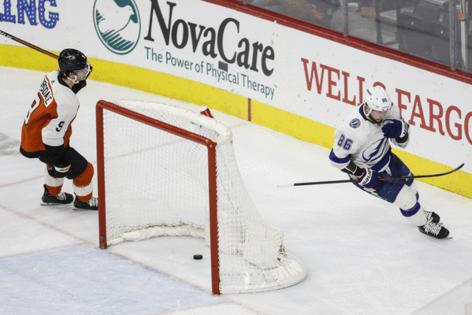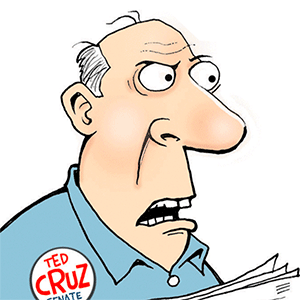Ten things to know about the NHL's new collective bargaining agreement
Published in Hockey
PHILADELPHIA — Last week, the National Hockey League and the NHL Players’ Association ratified a new four-year collective bargaining agreement that will commence with the 2026-27 season and run through 2030.
The deal, which was agreed to a full year before the current CBA expires next July, notably came together rather smoothly and with relatively few hiccups or contention points, especially compared to past negotiations between the two parties. NHL commissioner Gary Bettman and union head Marty Walsh, who spearheaded the talks, called the process and the idea of five years of labor peace refreshing and exciting for the future direction of the sport.
“The partnership between the Players’ Association and the League is stronger than it ever has been and working together under this agreement presents a fantastic opportunity to continue to grow the game,” Bettman said.
But while a new CBA and no threat of a work stoppage will undoubtedly be welcome news for hockey fans, what are the key changes in the new agreement? We sifted through the 167-page memorandum of understanding to pick out the 10 most interesting items.
1. More regular-season games
Beginning with the 2026-27 season, the NHL will move to an 84-game schedule for the regular season. In exchange for adding two more regular-season games, the NHL will decrease the number of preseason games to a maximum of four. This season, the Flyers are set to play seven preseason contests.
This change also bans fitness testing like John Tortorella’s dreaded “rope test” and adds more preseason days off and reduces the number of preseason games for veterans.
2. Fixing LTIR
The Tampa Bay Lightning, Vegas Golden Knights and Florida Panthers have accounted for five of the last six Stanley Cups. But those teams have more in common than just reaching hockey’s holy grail; they also all took advantage of long-term injured reserve to build and field rosters in the playoffs that would not have been salary-cap compliant during the regular season. Whether it be Nikita Kucherov, Mark Stone or Matthew Tkachuk missing extensive time and then healing just in time for the playoffs, those teams, and many others less successfully, have exploited a loophole that ultimately helped them add a significant player or two for the playoff push.
While fans have raged about this for years, the NHL is finally acknowledging it’s a problem, a U-turn from what it previously said publicly, and addressing it within the new CBA. While teams will still be permitted to put players on LTIR and temporarily exceed the cap, they must field cap-compliant game lineups in the playoffs. The language is a bit confusing, but essentially, teams must submit a 20-player roster (18 skaters and two goalies) for each playoff game that comes in under the regular-season cap ceiling. About time!
3. Shorter contracts
One of the biggest developments in the new CBA will be shorter max contract lengths. Currently, the max contract length for a free agent is seven years on the open market and eight years if the player is re-signing with his team.
Starting in 2026, those max terms will shrink to six and seven years, respectively. For example, Travis Konecny’s eight-year extension that he signed with the Flyers last summer could have been for only seven years under the new rules.
4. No more EBUGs?
The days of accountants and Zamboni drivers playing goalie in NHL games may soon be over.
One of the weirder rules in sports, which previously allowed teams to basically pull someone from the stands or from the arena staff to serve as an emergency goalie, has undergone some tweaks. Starting after next season, emergency backup goalies will need to be declared by each team 48 hours before the season starts and 24 hours before a specific game. This designated emergency goalie will travel with the team to each game and only be eligible to play for that team; previously, the EBUG was on standby for either team.
But the days of EBUGs like Scott Foster and David Ayres might not be completely over, as the new rules include some other criteria that will limit teams’ options for their emergency goalies. Going forward, these EBUGs can never have played in an NHL game, not played more than 80 career pro games, or have played pro hockey in the last three seasons. You can officially put the pads away, Brian Boucher.
5. Edge of 19
The NHL’s long-standing and much-criticized rule preventing players under the age of 20 from being assigned to the American Hockey League looks to be nearing its end. In the new CBA, the NHL says it “will reopen its agreement with the Canadian Hockey League to eliminate the mandatory return rule for 19-year-old players.”
But don’t expect the AHL to become a kids’ league either, as the NHL says it will allow each team to loan only one player who meets this criteria to the AHL per season. This potential change comes a year too late for the Flyers, who undoubtedly would have been interested in loaning Jett Luchanko, who turns 19 next month, to the Lehigh Valley Phantoms this season. Instead, Luchanko will either stay with the NHL club or be required to return to juniors in the Ontario Hockey League
6. See you in France
While NHL players will return to the Olympics next February for the first time in 12 years, the new CBA also outlines the plan for them to play again at the 2030 Winter Games in the French Alps.
“Notwithstanding the foregoing, the NHL and the NHLPA commit to participate in the 2030 Winter Olympics, subject to negotiation of terms acceptable to each of the NHL, NHLPA, and IIHF (and/or IOC).”
The more best-on-best hockey, the better.
7. No more dress code
The players have long sought to eliminate the NHL dress code and mandate to wear suits before games in favor of mimicking the stylistic freedom and comfort afforded to athletes in sports like the NFL and NBA. They will finally get their wish, as the new CBA states that “clubs are no longer permitted to propose any rules concerning Player dress code,” but that “Players are required to dress in a manner that is consistent with contemporary fashion.”
We’ll have to wait and see what that second part means ...
8. No more Shohei Ohtani-like deals
While no NHL player has taken it to Shohei Ohtani-like levels just yet in terms of deferred money, the NHL is being proactive in banning these types of deferred contracts after players such as Frank Vatrano and Seth Jarvis signed such deals this past season.
9. Mandatory neck protection
In the wake of former NHLer and Phantoms forward Adam Johnson’s death after being clipped by a stray skate blade while playing professionally in the United Kingdom in 2023, neck protection and player safety have become major talking points in hockey.
The AHL mandated cut-resistant neck guards or neck protection for players and officials last season, and the NHL will soon follow suit. In 2026-27, all players with zero games of NHL experience will be mandated to wear neck protection. Many NHL players, including Flyers stars Travis Konecny and Travis Sanheim, have adopted such protection already, citing their families and setting an example for their younger teammates as reasons behind their decisions.
10. End of double retention
The new CBA will also limit teams from being “brokers” in NHL trades, as three-way deals in which a player’s salary is split with an extra team will no longer be allowed.
Retained salary transactions are still allowed, but there must now be a 75-day waiting period between those types of moves.
©2025 The Philadelphia Inquirer. Visit inquirer.com. Distributed by Tribune Content Agency, LLC.







Comments